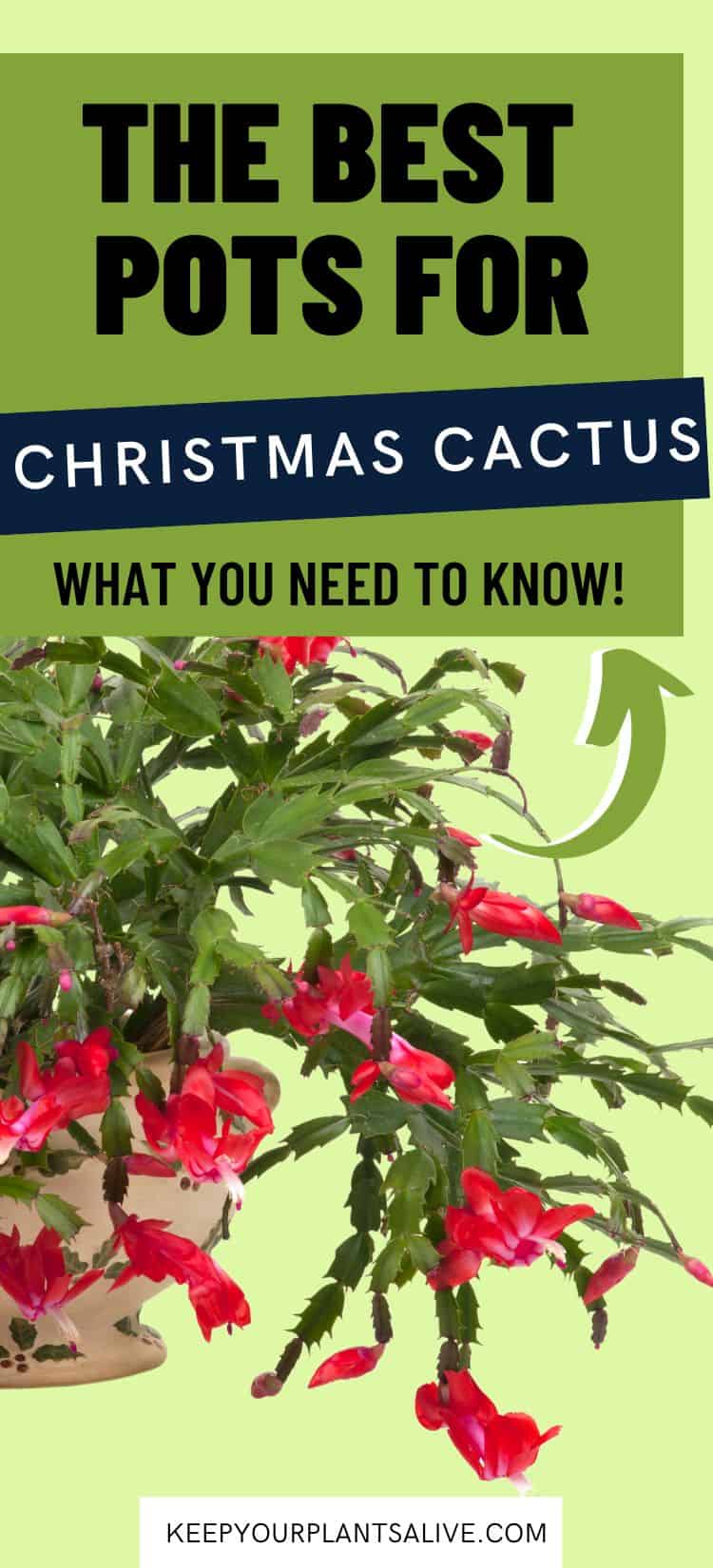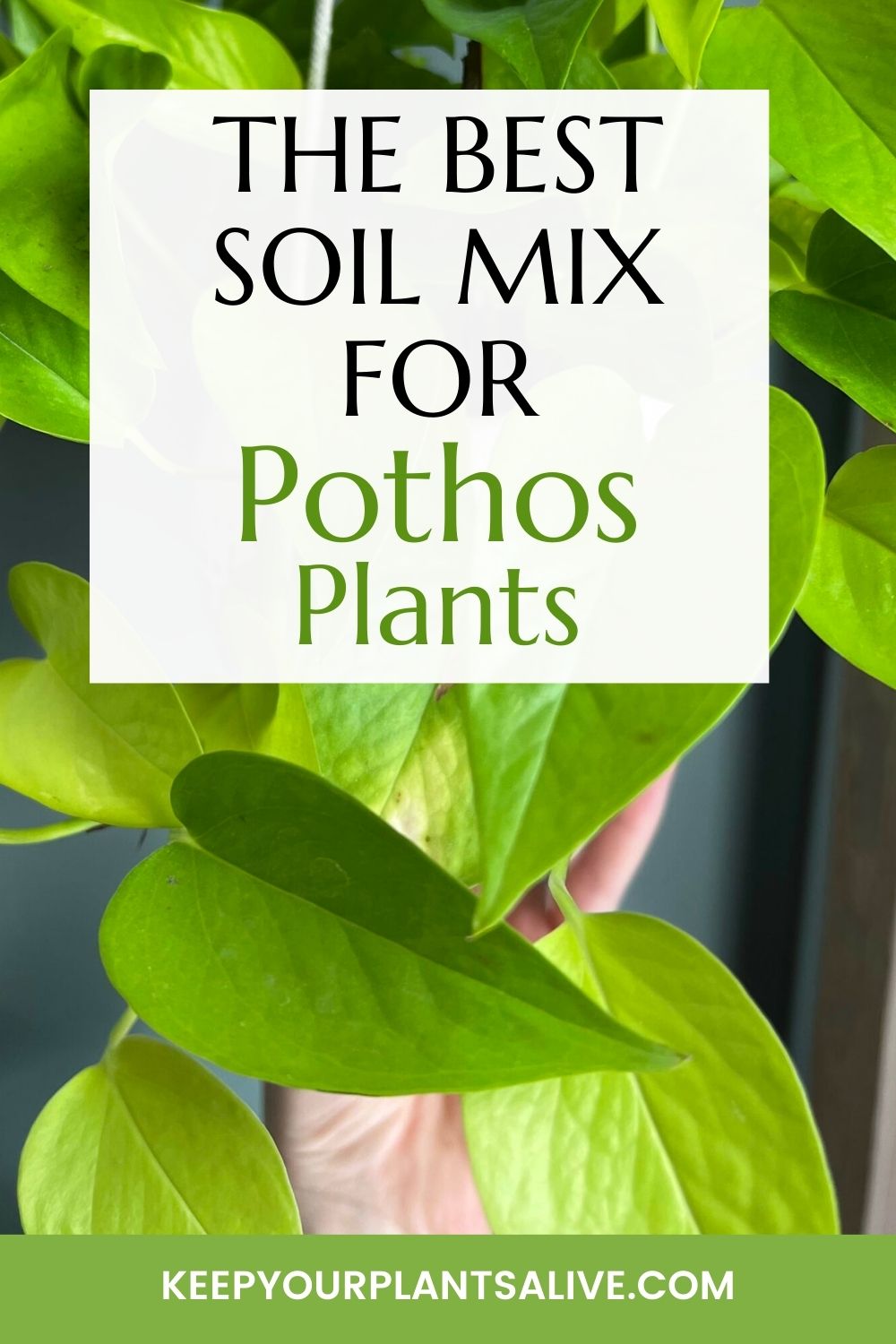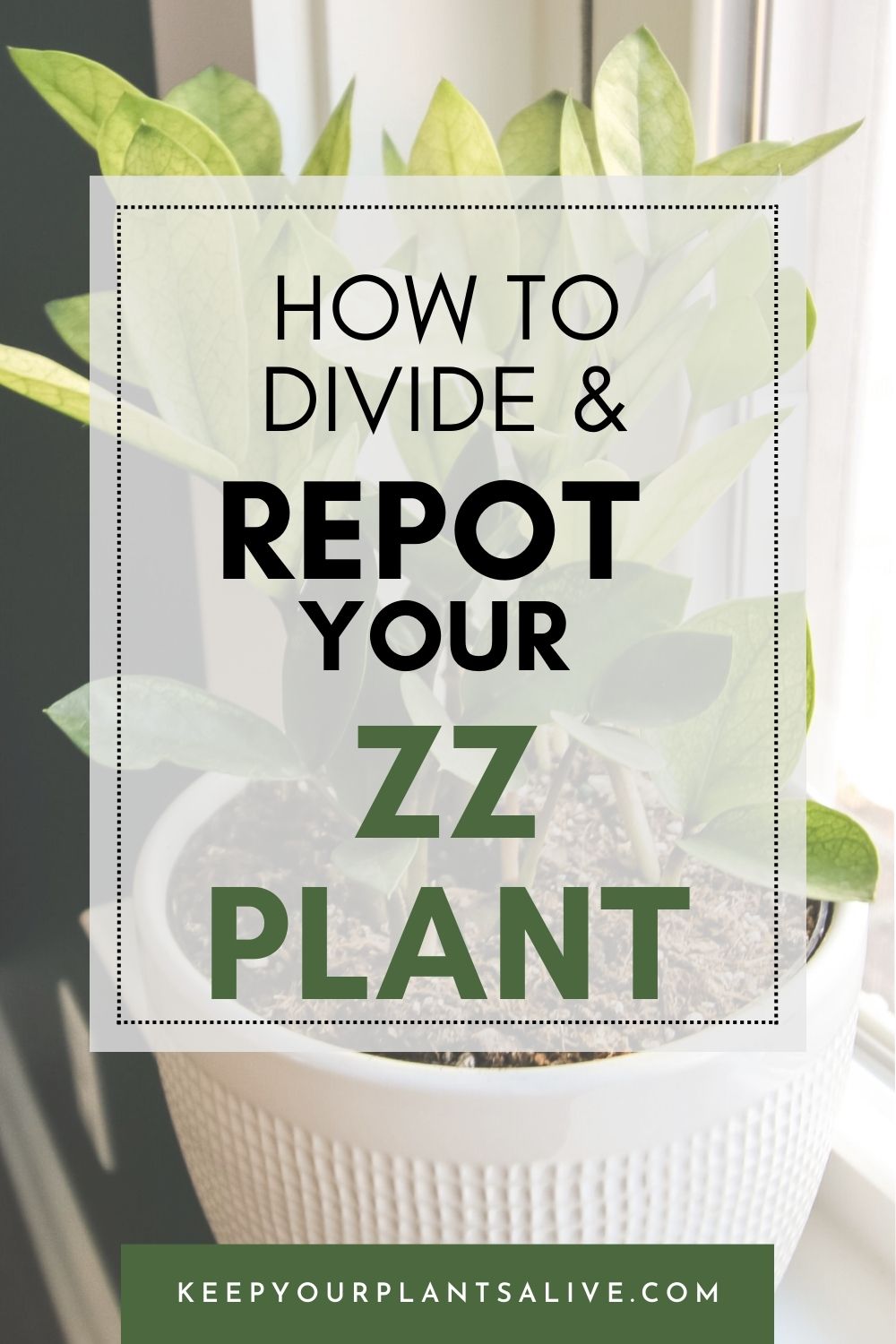Looking for the best soil for your ZZ Plant? Let's talk about this easy care houseplant and it's nutrient needs, so you can pick the perfect ZZ plant soil!
The ZZ plant, with its glossy leaves, is truly a picture-perfect specimen. It’s no wonder why so many plant Instagram profiles feature it!
You might have been charmed by its evergreen beauty, and now you’re thinking of getting one, or perhaps you've already added it to your collection.
Either way, there’s something fundamental you must know: ZZ plant soil.
Like most plants, the ZZ has its own preferred environment, starting from the ground it’s in.
So, come along as we explore the world beneath the pot and give you the scoop on setting your ZZ plant up for success!

Understanding ZZ Plants' Native Terrain
ZZ plants hail from the arid regions of Eastern and South Africa. This means they're accustomed to long droughts and well-draining soils.
If you’ve seen a ZZ in its native habitat, you’ll notice it’s quite adaptable.
This gives us the first hint: you need a ZZ plant soil mix that mimics their natural environment.
Want more ZZ plant topics?
- Raven ZZ plant care guide
- The Best ZZ Plant Soil
- Why is my ZZ plant getting yellow leaves?
- Why is my ZZ plant not growing?
- Why is my ZZ plant turning brown?
Free printable ZZ plant care guide
Join the (free!) KeepYourPlantsAlive+ community to access this exclusive printable plant care guide! Once you sign up, you can right click & save the JPG care guide. Or keep scrolling for more!
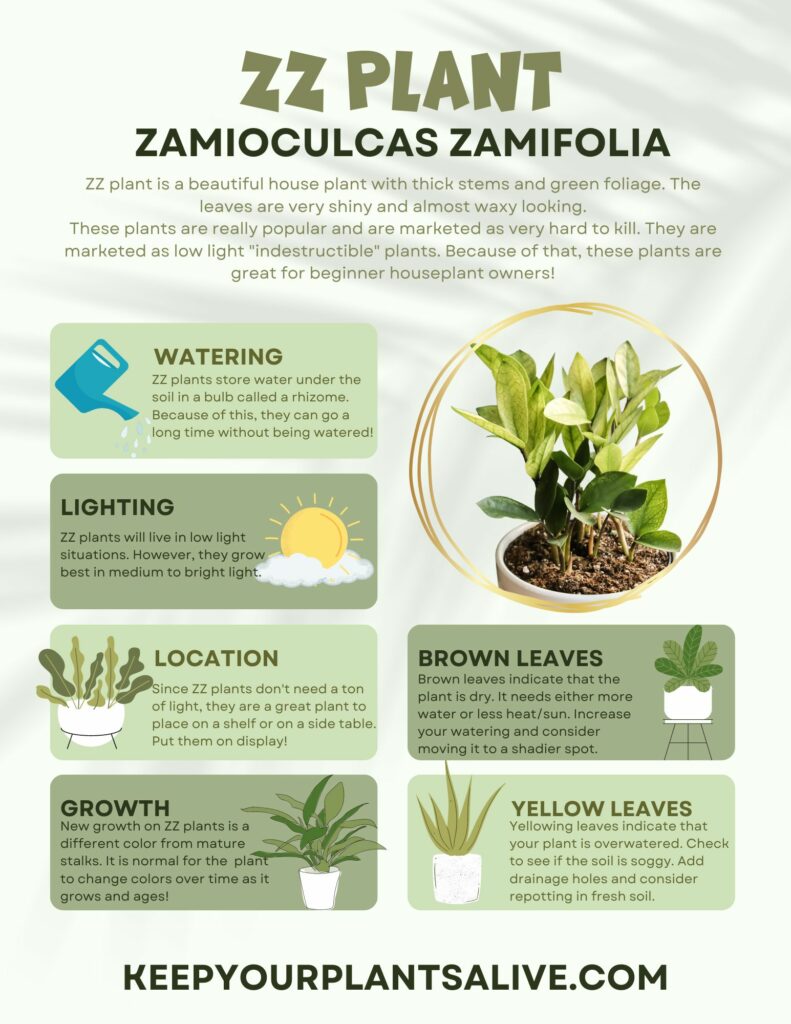
What Soil Suits the ZZ Plant?
We’ve got a good stepping stone: well-drained soil because the first and most important rule with ZZ plants is to not overpush it with the watering regime.
In other words, ZZ plant soil doesn’t tolerate being drenched in water.
Though the native environment of ZZ plants is tropical – the key to successful growth is drained roots!
So, as adaptable as they are, these plants still have some preferences. Let's dig deeper into the essential components of an ideal soil mix for a ZZ plant.

Drainage is Essential: The Lifeblood of ZZ Plants
The heartbreak of overwatering is real. The ZZ plant's native regions often face irregular rainfall.
ZZ plants actually have rhyzomes, like bulbs, under the soil. These bulbs store water and make it so the plant can go a long time between waterings.
Hence, ensuring excellent drainage imitates its natural habitat.
Perlite & Pumice
These are volcanic rocks, both light and porous. They play a pivotal role in making the soil well-draining.
When integrating them into your ZZ plant potting soil, consider adding about 10-20% of the total volume.
This ensures swift water drainage, minimizing the risk of root rot. Not only do they aid in letting those roots breathe, but they also prevent compaction, ensuring the soil remains light and airy.
Coarse Sand
Imagine the gritty texture of the soils in arid regions. That's what you're aiming for with the addition of coarse sand.
Adding about 10-15% coarse sand to your ZZ plant soil mimics its natural terrain. It allows water to flow more freely and, combined with perlite and pumice, ensures no water pools at the bottom.
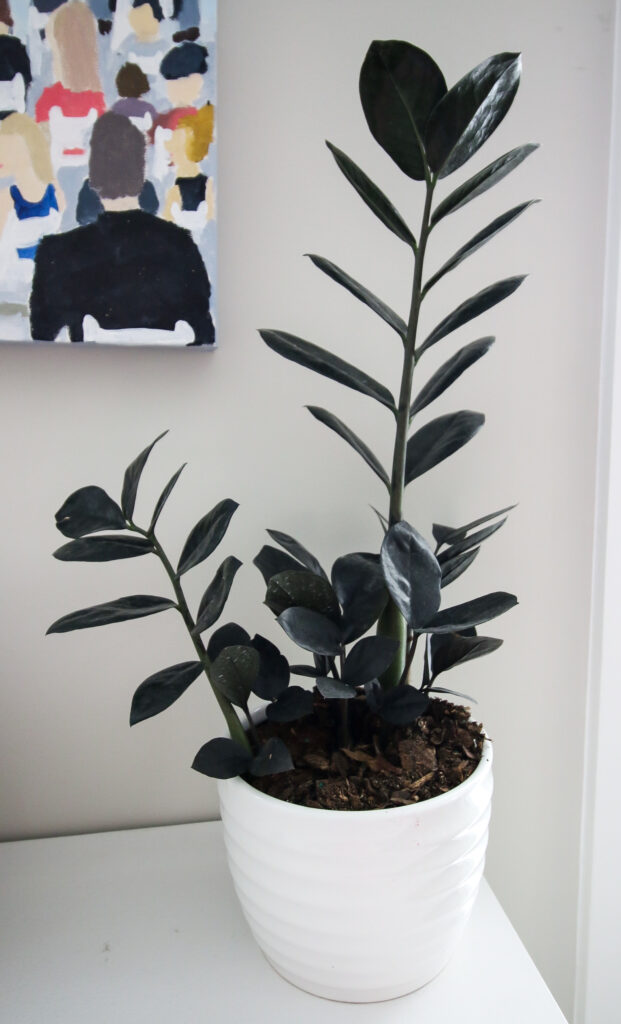
A Touch of Moisture Retention: Striking the Right Balance
While ZZ plants are champs at surviving droughts, they still need some water to thrive.
Peat Moss or Coconut Coir
Both these materials excel at retaining moisture without making the soil waterlogged. Peat moss can absorb water up to 20 times its dry weight! But there's a catch.
Peat moss is acidic (with a pH of around 4.0), so if you use it, you might need to balance the pH with a bit of lime.
Coconut coir, on the other hand, is more neutral in pH (5.5 to 6.8) and is a sustainable alternative to peat moss.
Whichever you choose, aim for about 20-30% of your mix. This ensures the roots get the hydration they need without being constantly soaked.
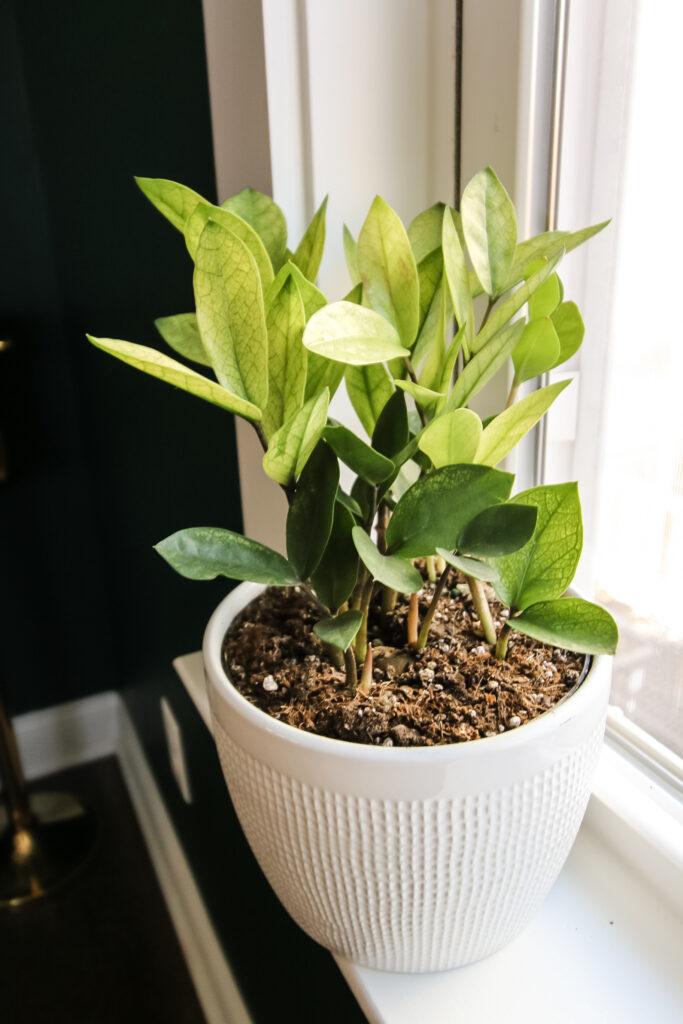
Feed Those Roots: Nourishing the Soul of Your ZZ Plant
Yes, ZZ plants are not fussy. But like all living things, they thrive best when they get their essential nutrients. That said, here’s how you should feed your ZZ soil.
Compost
Think of this as a multivitamin for your plant. Good compost is teeming with essential nutrients and beneficial microorganisms.
It improves the structure of the ZZ plant soil, ensuring roots can spread out easily.
Given the vast nutrient profile of compost, consider making it 20-25% of your soil mix, as it provides a slow release of nutrients over time.
Worm Castings
Known as nature's fertilizer, worm castings provide a rich source of both macro and micro-nutrients in a form easily absorbed by plants.
Worm castings also help improve soil structure, making it crumbly and airy.
You'd want to add about 5-10% of worm castings to your ZZ plant soil mix. Not only will they feed the plant, but they'll also introduce beneficial microbes that enhance soil health.
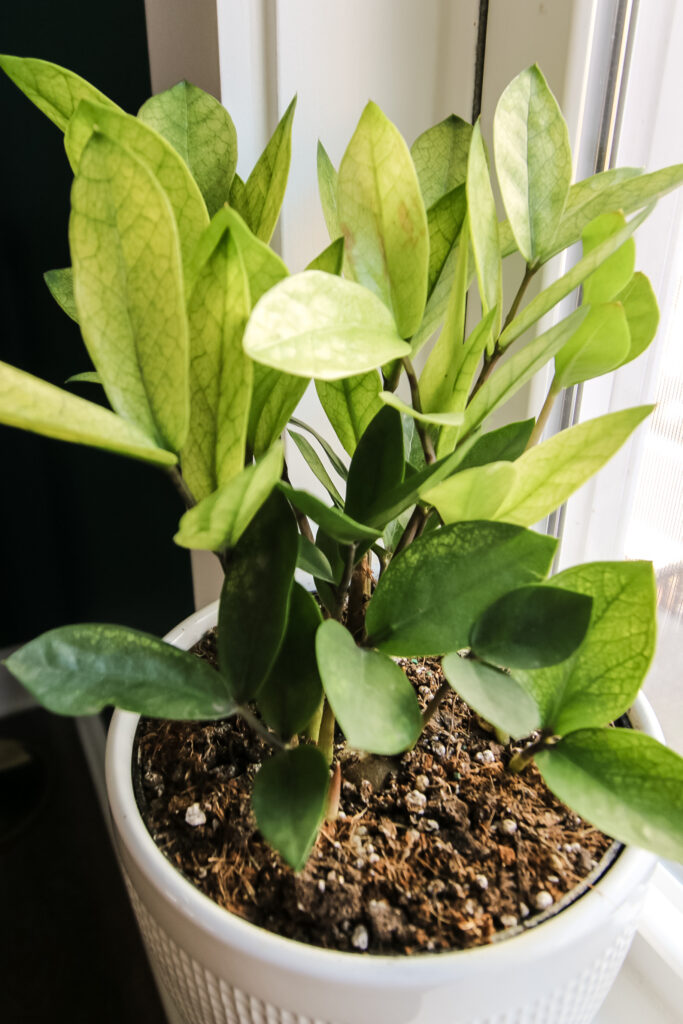
Putting Together the Perfect Mix
Now, let’s combine these elements for a soil mix that’ll make your ZZ plant sing (or at least grow Armed with this detailed breakdown, you can create the optimal environment for your ZZ plant.
Remember, the key is to mimic nature.
The perfect soil mix for ZZ plants includes:
- 2 parts all-purpose potting soil
- 1 part perlite or pumice
- 1 part coarse sand
- 1 part peat moss or coconut coir
- A generous handful of compost or worm castings
Mix these together, and voila, you've crafted the best soil for a ZZ plant.

Addressing Soil Concerns for the ZZ Plant
Sometimes, even when you think you’ve done everything right, problems may arise. Let’s navigate through some typical soil-related concerns and how to spot them easily before it’s too late.
Overwatering Symptoms
If your ZZ’s leaves are yellowing or the stems are getting mushy, overwatering might be the culprit. Check the soil: if it’s consistently wet, consider repotting into a fresh batch of your ZZ soil mix.
Nutrient Deficiencies
Brown leaf tips or a pale-green color might indicate your ZZ lacks nutrients. If so, it’s time to either report or introduce a balanced, slow-release fertilizer to the ZZ soil.
Root Rot
This is a silent killer that strikes when the soil remains soggy for extended periods. If the roots stay soggy for too long, they turn black and mushy. If detected, remove the affected roots and repot into fresh soil.

Laying Down Strong Roots
Your ZZ plant is more than just an ornamental piece; it's a living entity craving the right conditions.
Mastering ZZ plant soil sets the stage for a thriving, beautiful plant. Remember, it’s all about mimicking the natural habitat and finding that sweet spot between moisture and drainage.
And there you have it, the comprehensive guide to ensuring your ZZ plant feels right at home. For more on plant care, stick around on our blog. Your green space awaits your expertise!
Thanks for reading!


Hey there, I'm Morgan, a houseplant enthusiast from sunny Charleston, South Carolina. Growing up surrounded by my mom's lush orchids and African violets, I discovered the magic of bringing nature indoors. Thanks to the pandemic, I delved deeper into houseplants, discovering their power to uplift moods and transform spaces. I'm here to spill all my secrets, helping you pick the perfect houseplant - and make it happy. Let's keep your plants alive, together! 😊


